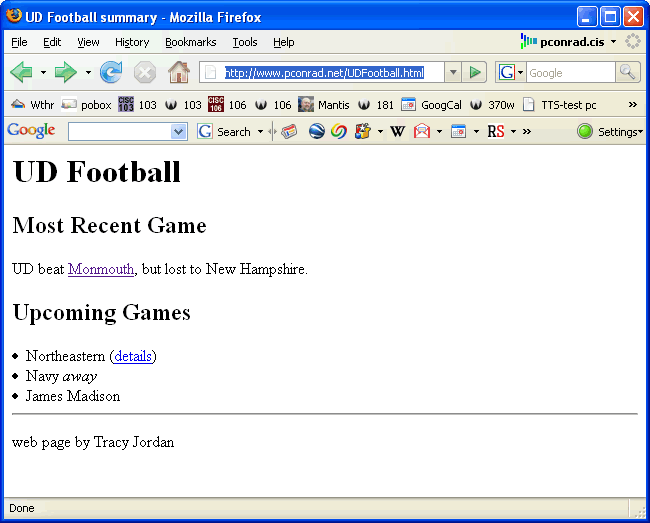Name: ________________________________________________________________
UD Email: _____________________________________________@ udel.edu
Do not write your name on any page except this one.
Answer the multiple choice questions on the scantron sheet.
Answer the remaining questions on this paper directly.
Total Points: ???
A hint about allocating your time:
You need to answer 100 points worth of questions in 75 minutes, so....
That will allow you to complete 100 points worth of questions in 50 minutes.
Then you'll have 25 minutes left over so that you can either
(References: Labs 01,03,05, Head First HTML Chapters 1-3)
Along with this exam, you were given a separate handout with an example web page about UD Football, and a page of specific instructions on how to write that page.
In the space below and continuing on the following page(s), please write the HTML for this web page, according to the following specific instructions. (Note: if you don't know how to do part of this, just do the parts you do know how to do, for partial credit.)
<!-- extra space for your answer -->
(p. 35 of the Unix, Visual Quickstart Guide, 3rd Edition, p. 138-139 of the Head First HTML book, Lecture Notes 10/04/07)
(End of Exam)
body, head, html, title.
body element, and in appropriate tags to indicate whether it is a regular paragraph, or a heading. Be sure your heading tags are at the right level for the outline of the information. <li> elements for each item, all nested inside one big <ul> element (unordered list).hr elements (with a self-closing tag) to separate the main content from the "by Tracy Jordan" byline.<em> tag to markup the text away so that it is emphasized (and by default, appears in italics).nextGame.html stored on the same server, and in the same directory as the page you are editing. www.monmouth.edu